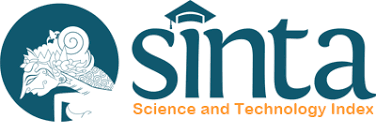INCLUSIVE DEVELOPMENT APPROACH FOR REDUCING SOCIAL EXCLUSION IN URBAN AREA: A CASE STUDY OF MARGINAL GROUPS IN KAMPUNG SEMANGGI, SOLO, CENTRAL JAVA
DOI:
https://doi.org/10.14203/jmb.v17i2.283Abstract
Since the 1980’s the paradigm of development in developing countries, especially in urban areas, has relied on the economic development with economic growth as the main output. This model tends to produce poverty, deprivation, and social exclusion. Social exclusion is a condition, in which individuals, families, and groups in the population do not have the social and political access toward social resources, lack of participation in social activities, and have inadequate living conditions and facilities. This development paradigm has been criticized as it only uses economic indicators and neglects other non-economical aspects. The challenge is to redefine or conceptualize the development in a wider term as a continuum process on a society or a social system led to social inclusion. It is a new approach, which develops an open environment and involves everyone from various backgrounds in the development process. As the development gap between rural and urban areas is getting wider, understanding social inclusion development is a need. Furthermore, President Joko Widodo’s (Jokowi) Nawacita declared that the State must be present among society; therefore, the development should start from the periphery to the centre in order to improve the quality of life, prosperity, and democracy. This paper aims to reconstruct the values of urban development along with the concept of social inclusion in order to increase the quality of life, social relationships, social cohesion, social participation, and social capital in Solo, Central Java. Keywords: social exclusion, social inclusion, inclusive developmentDownloads
References
Basset, K., Hoare, T., & Glen, N. (1996). The Emergence of Postmodernism on the Urban Waterfront. Great Britain: Pergamon. crossref
Belsky, E.S. (2012). Planning for inclusive and sustainable urban development. Dalam Starke, Linda (Ed.) State of the World 2012: Moving Toward Sustainable Prosperity (hlm. 38-52). Washington DC: Island Press/Center for Resource Economics. crossref
Blakely, E.J. & Bradshaw, T.K. (2002). Planning Local Economic Development: Theory and Practice. Thousand Oaks: Sage Publications.
Bulan, W.R. (2013). Local Reform di Kota Solo pada era JOKOWI (TAHUN 2005-2012):
BPS. 1970. Analisis dan Penghitungan Tingkat Kemiskinan 1970. Jakarta.
Brata, A.G. (2004). Nilai Ekonomis Modal Sosial pada Sektor Informal Perkotaan. Jakarta: Lembaga Penelitian Universitas Atma Jaya.
Busse, S. (2001). Strategis of Daily Life: Social Capital and the Informal Economy in Russia. University of Chicago, and The World Bank. 1998. hlm. 5-7.
Coleman, J. (1988). “Social Capital in the Creation of Human Capital.â€American Journal of Sociology 94. (Supplement) S95S120. (Dalam: The World Bank. 1998. Hal 5-7). crossref
Derwanto, A. (2014) “INDEKS ... Ilustrasi Pembangunan .... 7 Sekolah Inklusi Dapat Prioritas Bantuanâ€. Harian Umum Solopos (28 Oktober).
Huntington, S.P. (1983). Tertib Politik di Dalam Masyarakat yang Sedang
Berubah. Jakarta: Rajawali.
Grootaert, C. (1997). “Social Capital: The Missing Link?†in Expanding the
Measure of Wealth: Indicators of Environmentally
Issue
Section
Authors who publish with this journal agree to the following terms:
- The copyright for articles in this journal is retained by the authors.
- Authors grant to the journal first publication rights and the right to distribute the article, including the journal's web site, online data bases and other similar forms.
- Authors agree to license their work according to Creative Commons Attribution-NonCommercial-NoDerivatives 4.0 International License.
- Articles published in JMB are free to use for non-commercial uses as long as the authors and the journal are attributed properly and the new creations are licensed under the indentical terms (license Creative Commons (CC BY-NC-ND 4.0).
- Authors retain the right to reproduce and distribute their articles in any format, without prior authorization, with the proper acknowledgment to the first publication.
- If the article contains copyright material owned by others, authors should obtain written permission from the copyright owner/s in order to reuse the material. Appropriate acknowledgment should be included.
- Authors are encouraged to post their article online (in institutional repositories, personal websites etc). Any such posting must include a reference and a link to the journal's website.
Penulis yang menerbitkan pada jurnal ini menyetujui ketentuan berikut:
- Hak cipta untuk artikel dalam jurnal ini disimpan oleh penulis.
- Penulis memberikan kepada jurnal hak publikasi pertama dan hak untuk mendistribusikan artikel, termasuk situs web jurnal, basis data online dan bentuk serupa lainnya.
- Penulis setuju untuk melisensikan karya mereka sesuai dengan Creative Commons Attribution-NonCommercial-NoDerivatives 4.0 International License.
- Artikel yang diterbitkan dalam JMB bebas digunakan untuk penggunaan non-komersial selama penulis dan jurnal dikaitkan dengan benar dan kreasi baru dilisensikan menurut istilah indentis (lisensi Creative Commons (CC BY-NC-ND 4.0).
- Penulis mempertahankan hak untuk mereproduksi dan mendistribusikan artikel mereka dalam format apa pun, tanpa izin sebelumnya, dengan pengakuan yang tepat untuk publikasi pertama.
- Jika artikel tersebut berisi materi hak cipta yang dimiliki oleh orang lain, penulis harus mendapatkan izin tertulis dari pemilik hak cipta untuk menggunakan kembali materi tersebut. Pengakuan yang tepat harus disertakan.
- Penulis didorong untuk memposting artikel mereka secara online (dalam repositori institusional, situs web pribadi dll). Setiap posting seperti itu harus menyertakan referensi dan tautan ke situs web jurnal.

.png)









